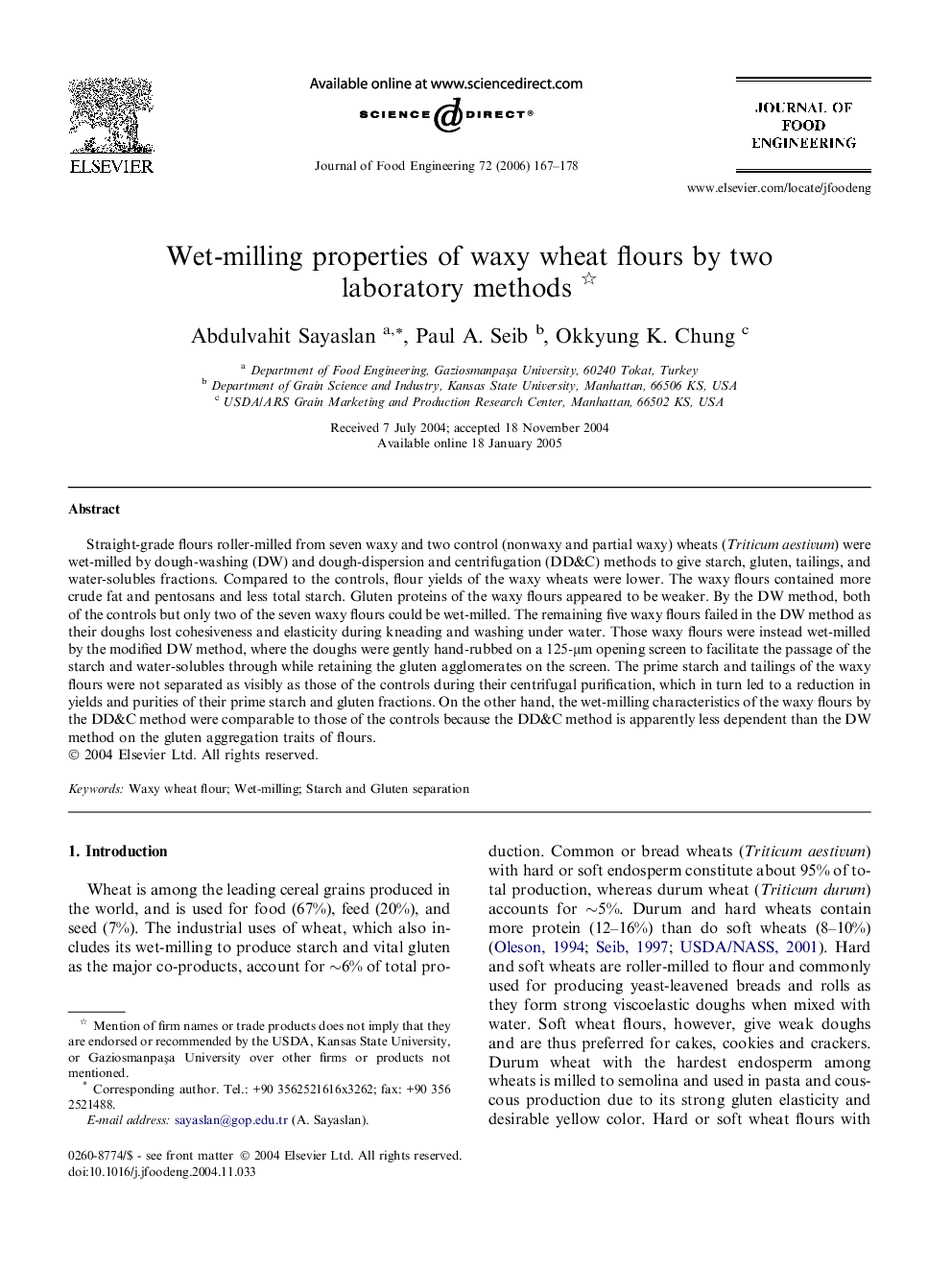| Article ID | Journal | Published Year | Pages | File Type |
|---|---|---|---|---|
| 226623 | Journal of Food Engineering | 2006 | 12 Pages |
Straight-grade flours roller-milled from seven waxy and two control (nonwaxy and partial waxy) wheats (Triticum aestivum) were wet-milled by dough-washing (DW) and dough-dispersion and centrifugation (DD&C) methods to give starch, gluten, tailings, and water-solubles fractions. Compared to the controls, flour yields of the waxy wheats were lower. The waxy flours contained more crude fat and pentosans and less total starch. Gluten proteins of the waxy flours appeared to be weaker. By the DW method, both of the controls but only two of the seven waxy flours could be wet-milled. The remaining five waxy flours failed in the DW method as their doughs lost cohesiveness and elasticity during kneading and washing under water. Those waxy flours were instead wet-milled by the modified DW method, where the doughs were gently hand-rubbed on a 125-μm opening screen to facilitate the passage of the starch and water-solubles through while retaining the gluten agglomerates on the screen. The prime starch and tailings of the waxy flours were not separated as visibly as those of the controls during their centrifugal purification, which in turn led to a reduction in yields and purities of their prime starch and gluten fractions. On the other hand, the wet-milling characteristics of the waxy flours by the DD&C method were comparable to those of the controls because the DD&C method is apparently less dependent than the DW method on the gluten aggregation traits of flours.
